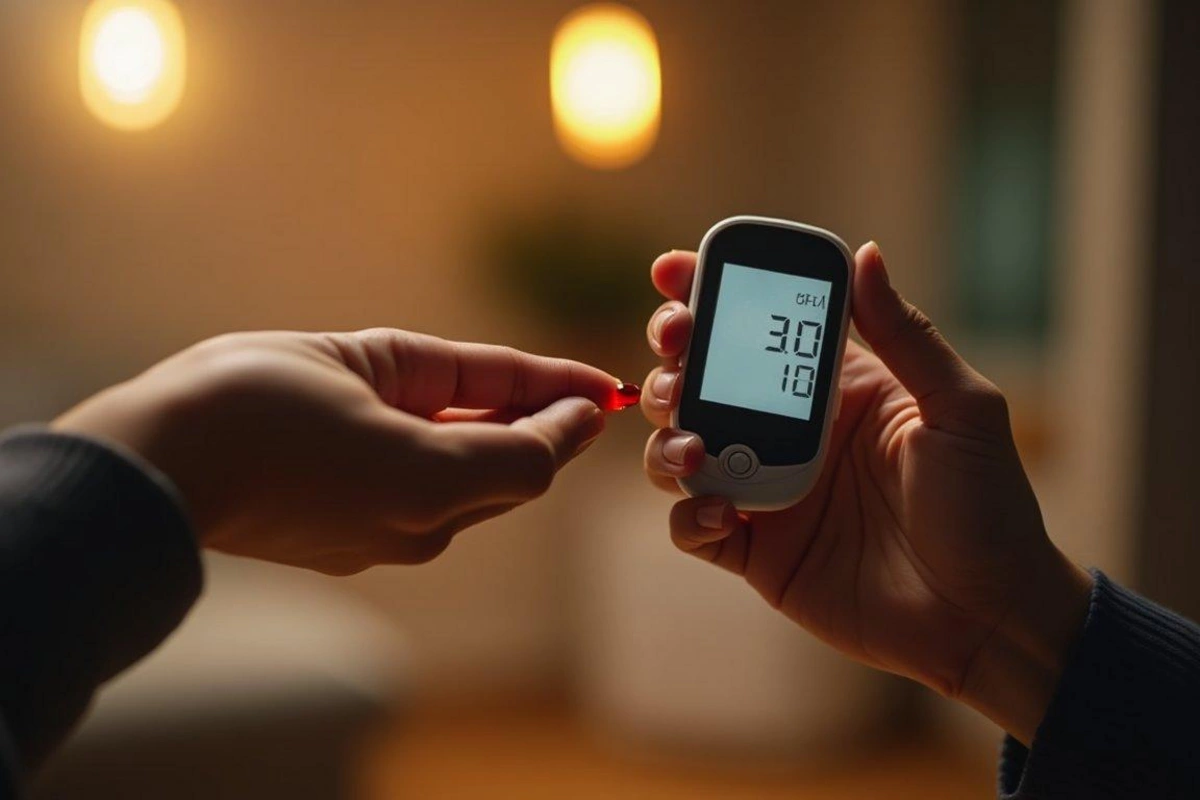7 Early Signs of Diabetes You Should Never Ignore

Early detection can save your life. Diabetes – especially type 2 diabetes – often develops slowly, with subtle warning signs that are easy to overlook. In the United States, about 38 million people have diabetes (roughly 1 in 10), yet 1 in 5 don"t know it. Even more worrisome, around 98 million American adults (more than 1 in 3) have prediabetes, and over 80% of them are unaware of it. Prediabetes symptoms can be practically invisible, so by the time early diabetes signs appear, your blood sugar may already be at dangerous levels. Many people dismiss these signs because type 2 diabetes progresses gradually – the damage from high blood sugar isn"t immediately obvious. Don"t fall into that trap. Recognizing the early symptoms can prompt you to get tested and make changes before serious complications set in.
In this article, we"ll explain seven key early indicators of diabetes that you should never ignore. We"ll also highlight practical health tips USA readers can use to act on these warnings. These signs apply especially to type 2 diabetes (the most common form) and often to prediabetes. If you notice any of these, take them seriously – early detection and lifestyle changes are critical for preventing long-term harm.
1. Frequent Urination (Polyuria)
One of the hallmark early diabetes signs is needing to urinate far more often than usual. You might find yourself running to the bathroom constantly, especially waking up multiple times at night. High blood sugar forces your kidneys to work overtime to filter and flush out the excess glucose. When the kidneys can"t keep up, excess sugar spills into your urine, dragging water along with it – hence the frequent urination. Don"t shrug this off as just drinking more fluids; if you suddenly have to pee all the time, it could be your body"s alarm bell that your blood sugar is too high.
2. Excessive Thirst (Polydipsia)
Feeling unquenchably thirsty is another red flag, often paired with frequent urination. When you"re urinating a lot, you lose plenty of water, which can leave you dehydrated. This dehydration triggers excessive thirst as your body begs to replenish the fluids. What"s tricky is that drinking more may not fully satisfy your thirst if high blood sugar is the culprit. If you"re refilling your water glass non-stop and still feeling parched, pay attention – persistent thirst (especially with a dry mouth) can be an early warning of diabetes.
3. Constant Hunger (Polyphagia)
Are you hungry all the time, even after meals? Constant, unexplained hunger can be a prediabetes symptom and early sign of type 2 diabetes. Here"s why it happens: insulin resistance (a precursor to type 2 diabetes) prevents your cells from absorbing glucose properly, so your cells are literally starved for energy despite plenty of sugar floating in your blood. In response, your body keeps sending hunger signals, thinking it needs more fuel. As a result, you may feel insatiable appetite – you eat and then feel hungry again soon after. In some cases, people even lose weight without trying, because their cells can"t use the glucose and start breaking down fat and muscle for energy. If you notice you"re eating constantly but still feeling hungry (or dropping weight unexpectedly), it"s time to get your blood sugar checked.
4. Fatigue and Weakness
Everyone has an occasional tired day, but extreme or persistent fatigue for no obvious reason can signal a problem. High blood sugar effectively robs your cells of the fuel they need – since glucose isn"t entering cells properly, your body"s organs and muscles don"t get enough energy, leaving you chronically tired. Dehydration from all that excess urination can further sap your energy, making you feel weak and drained. You might find that daily tasks or exercise that used to be easy now exhaust you. Don"t just chock it up to getting older or having a busy life – new-onset fatigue or weakness could be your body"s way of saying your blood sugar is out of balance.
5. Blurry Vision
Vision changes are another early diabetes sign that people often attribute to aging or needing new glasses. In reality, high blood sugar can directly affect your eyes. Excess glucose can cause swelling in the lens of your eye or damage the tiny blood vessels in the retina, leading to blurred or distorted vision. You might notice it"s suddenly harder to read fine print or that your vision sometimes fuzzes out, even if you previously had 20/20 sight. Left unchecked, high blood sugar can cause progressive eye damage (diabetic retinopathy) and even blindness. So if your vision is getting blurry or you have episodes of "foggy" sight in one or both eyes, don"t ignore it – have your eyes and blood sugar evaluated.
6. Slow-Healing Wounds and Frequent Infections
Have you noticed that cuts, scrapes, or bruises take forever to heal? This is a common early sign of diabetes. Elevated blood sugar harms your circulation and immune system: it damages nerves and blood vessels, reducing blood flow and the delivery of nutrients needed for healing. A wound that once closed up in a few days might now linger for weeks. High blood sugar also creates a welcoming environment for germs. In fact, many people with undiagnosed diabetes experience frequent infections – for example, recurring urinary tract infections or yeast infections in women – because excess sugar in tissues and urine feeds bacteria and yeast. You might also get more frequent colds or skin infections than usual. If your small nicks become big hassles or you"re constantly battling infections, it"s a major red flag that warrants a diabetes screening.
7. Tingling or Numbness in Hands and Feet
Tingling, numbness, or a pins-and-needles sensation in your extremities can be an early sign of nerve damage caused by high blood sugar. Over time, elevated blood glucose can injure nerves, especially the long nerves that reach your hands and feet – a condition called diabetic neuropathy. In the beginning, you might notice a subtle prickling or reduced sensation in your toes, feet, fingers, or hands. You might chalk it up to sleeping funny on your arm or poor circulation. But don"t ignore persistent numbness or tingling. These neuropathy symptoms often start mild and then worsen as diabetes progresses. Catching them early is crucial: by improving blood sugar control you may prevent further nerve damage. If you"re experiencing unexplained tingling, burning, or loss of feeling in your extremities, get it checked out promptly.
(Tip:) Another potential early indicator to watch for is skin changes. Some people develop dark, velvety patches of skin in body folds (like the neck or armpits) known as acanthosis nigricans, which can signal insulin resistance. If you notice these patches along with other symptoms, bring it up with your doctor.
Taking Action: Healthy Tips for Prevention and Screening
Noticing one or more of these early diabetes signs can be scary, but the good news is that you have the power to take action. Here are some practical steps and health tips (USA-focused) to help you stay ahead of diabetes:
-
Get a screening test: Don"t hesitate – if you have these symptoms (or other risk factors like obesity or family history), see your healthcare provider and get tested. A simple blood sugar test (such as a fasting glucose or A1C) can confirm if you have diabetes or prediabetes. The American Diabetes Association recommends screening everyone aged 45 or older, and at any age if you"re overweight or have other risk factors. Early diagnosis is key.
-
Embrace an active lifestyle: Regular exercise helps your body use insulin more effectively. Aim for at least 150 minutes of moderate exercise per week (for example, 30 minutes a day, 5 days a week) as recommended by U.S. health guidelines. Activities like brisk walking, cycling, or swimming can lower blood sugar and improve your energy. If you have prediabetes, losing about 5–7% of your body weight through diet and exercise can lower your risk of developing type 2 diabetes by 58% (and even 71% if you"re over 60).
-
Improve your diet and cut sugary drinks: Focus on a balanced diet rich in vegetables, lean protein, whole grains, and fiber – these help keep blood sugar steady. Equally important, limit sugar and refined carbs. One major culprit is sugary beverages: frequently drinking soda, sweet tea, or juice is strongly linked to weight gain and type 2 diabetes. Swap those sugar-sweetened drinks for water, sparkling water, or unsweetened tea. Reducing added sugars in your diet will help you manage your weight and blood glucose more easily.
-
Follow up and follow through: If you"re diagnosed with prediabetes or diabetes, work with your doctor on a management plan. Small changes – like tracking your carbs, taking medications as prescribed, and routine blood sugar checks – can make a huge difference. Also, take advantage of resources like the CDC"s National Diabetes Prevention Program, which is available across the USA. These programs provide support for healthy eating and exercise, and have been proven to help at-risk individuals cut their progression to type 2 diabetes in half. And of course, don"t skip your regular check-ups – they"re an opportunity to catch issues early and adjust your plan as needed.
Conclusion: Don"t Ignore the Warning Signs
In summary, listen to your body. The seven symptoms above – from frequent urination and thirst to fatigue and numbness – are your body"s way of waving a warning flag. Never ignore these early diabetes signs. If you recognize any of them in yourself or a loved one, treat it with urgency: schedule a medical evaluation and get your blood sugar tested. As experts emphasize, catching diabetes or prediabetes early allows you to start management right away, which can prevent serious complications down the road. The earlier you know, the more you can do to turn things around.
Call to action: Make today the day you take charge of your health. Talk to your healthcare provider about diabetes screening, especially if you"re at risk. Encourage friends or family who have these prediabetes symptoms to do the same. With early detection and proactive lifestyle changes, type 2 diabetes can often be delayed or even prevented. You have the opportunity right now to safeguard your future health. Don"t wait – heed these early signs and act to stay healthy.
Similar News
Development of the travel industry: With the power of passion and digital impact
BAKU.WS presents an interview with the head of "Fahri Travel," Fahri Mamedli: - Fahri, how did your journey in the tourism sector begin? It all started with my...




 Azərbaycanca
Azərbaycanca  По-русски
По-русски  English
English 






